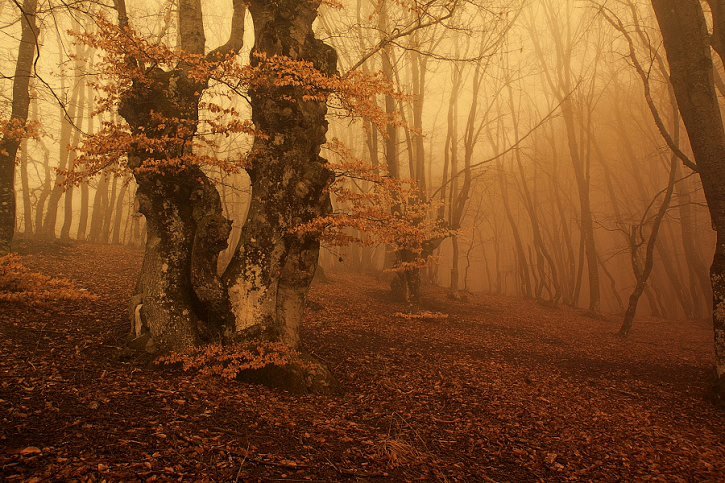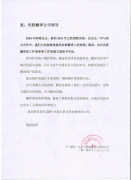世联翻译完成丛林探秘-绿林之王课题英文翻译
时间:2018-01-11 09:32 来源:未知 作者:dl 点击:次
世联翻译完成丛林探秘-绿林之王课题英文翻译
Wild Secrets
丛林探秘
Crowned Lemurs: Monarchs of the Pocket Forest
冠美狐猴:绿林之王
Narration Script 3/11/2005
解说稿 3/11/2005

Timecode
时间码 Narration
解说
TITLES (0:30)
专题(0:30)
0:32 On the island of Madagascar live many creatures found nowhere else on earth.
在马达加斯加岛上至今还栖居着许多世界上独一无二的生灵。
Lemurs are closely related to the ancestors of monkeys, apes and humans.
其中一种叫做狐猴的生物,与猴、猿和人类的祖先有着密切的联系。
Some of the rarest species live among the strange limestone formations known as tsingy and it’s here that families of Crowned lemurs live secret lives, ruling over tiny forests among the limestone.
一些稀有种类的狐猴就栖居在被称为“钦吉”的奇特石灰岩地貌上。在那里,它们以神秘的生活方式统领着石林王国。
Title: Crowned Lemurs: Monarchs of the Pocket Forest
专题:冠美狐猴:绿林之王
1:07 Madagascar is the fourth largest island in the world, with an area about the same as that of France.
马达加斯加是世界第四大岛,与法国国土面积大致相当。
1:13 It’s famous for its unusual creatures, and one of the rarest is found living only in the dry forests in the far north of the island.
它以栖居其间的珍稀物种而闻名于世,而其中的一种就偏安于岛北面热带旱林中的一隅。
1:25 This is one of the few regions of Madagascar which has, as yet, remained untouched by farming and forestry.
那里也是马达加斯加岛上仅有的几处未被人类农林耕种所开垦的处女地之一。
1:35 Trees as tall as 30 metres can still be found growing here.
至今仍可见高达三十余米的参天巨木。
1:47 It’s as lush as any tropical forest, and the fruits and insects of the treetops support plenty of animal life
那里有着热带雨林所特有的茂盛植被,树上的果实与树顶的昆虫们维系着众多动物们的生计。
1.59 The blue vanga feeds on insects.
蓝钩嘴鵙就是以昆虫为食。
2:04 So does the chameleon.
变色龙也不例外。
Madagascar has half the world’s chameleon species but it’s another creature that makes Madagascar’s forests unique.
马达加斯加拥有占世界半数以上品种的变色龙,但真正让这里的森林王国变得独一无二的却是另一种生物。
2:26 Only in Madagascar can you find lemurs.
那就是马达加斯加独有的狐猴。
2:35 This species – the crowned lemur - is found only in the forests of this northern region.
冠美狐猴仅生活在岛北部的森林中。
2:41 Crowned lemurs prefer to spend their time in the lower canopy of the forest, where they like to feed on fruits.
它们喜欢生活在较矮的林冠层,那里有着狐猴赖以生存的各种果实。
2:48 The dark crown on the head of this brown male is what gives this species its name.
这种雄性褐狐猴由其头部的深色冠状花纹而得名。
2:57 Females are greyer.
而雌性狐猴的体毛则更偏灰色。
3:02 These animals are about the size of a cat
这些狐猴的体型与猫近似。
3:05 They live in family groups of between 5 and 15 animals, where females are dominant.
每个家族的规模在五到十五只狐猴不等,而雌性狐猴则在家族中占据主导地位。
3:14 They share the island and some smaller ones nearby with around 50 other lemur species.
冠美狐猴与其他五十余种狐猴共同生活在马达加斯加岛及其相邻的岛屿上。
3:23 Lemurs are a very special group of creatures, because they can tell us a lot about our own distant ancestors.
狐猴是生物群落中最为特殊的群体,因为从它们身上我们可以获悉许多有关我们远古祖先们的讯息。
3:31 The ancestor of all primates, including lemurs, monkeys and humans, - a “prosimian” - evolved about 60 million years ago, possibly somewhere in Africa.
“原猴”被认为是包括狐猴、猴子及人类在内的所有灵长类动物的共同祖先。大约早在六千万年前,它们就已经栖居在非洲大陆。
By that time, Madagascar had already separated from the African continent.
而自那时起,马达加斯加岛就已经从非洲大陆板块中分离出来。
3:53 Some of the early primates probably drifted across the ocean from Africa on vegetation, and were able to become established here.
一些早期的灵长类动物可能是攀附在植被上从非洲大陆飘洋过海来到了马达加斯加,并最终在那里定居下来。
4:01 There were no monkeys or apes here to compete, so lemurs evolved in isolation, filling many ecological niches.
那时的马达加斯加岛上还没有猴或猿栖居,因此狐猴是在一种相对隔离的状态下逐渐进化而来的,填补了当地许多生态位的空白。
4:09 Some lemurs grew as large as gorillas, but these all disappeared when humans arrived here about 2000 years ago.
一些狐猴体型硕大,堪比大猩猩,但他们在距今两千年左右人类到达那里时就绝迹了。
4:20 One of the smallest that still survives is the mouse lemur. It lives just as the first prosimians did, hunting insects at night in the forest.
小嘴狐猴是狐猴家族中体型最小且存活至今的一种。直到现在它们都保持着远古时代原猴们靠捕捉昆虫为生的生活习性。
4:34 Other species, such as this dwarf lemur, evolved feeding on fruits and leaves.
而经历了漫长进化过程的侏儒狐猴等其他狐猴种类主要以果实和树叶为食。
4:44 The Indri evolved to become active during the daytime. It’s the largest of the living lemurs. It’s another vegetarian.
大狐猴经过进化之后喜爱在日间活动。它们是现有狐猴家族中体型较大的一支植食性动物。
4:54 The Gentle Lemur is one of only three primate species that feed on bamboo, which contains high levels of silica – and cyanide.
驯狐猴是仅有的三种以竹为食的物种之一,在竹子中含有大量的二氧化硅和氰化物。
5:08 Brown lemurs are about the same size as crowned lemurs.
褐狐猴的体型与冠美狐猴大致相当。
They’re widely distributed, and there are a number of subspecies.
他们的分布较广,并有许多亚种。
5:20 This one – Sandfords lemur – is the rarest, found only in the forests of this region.
桑氏美狐猴是最为稀有的品种,仅在这一地区的森林中生存。
5:27 Males are characterized by a white beard.
雄性狐猴最明显的特征即是他们的白胡子。
5:30 The female’s face is darker.
雌性狐猴的面部毛色较深。
5:35 These lemurs are also mainly vegetarian, but occasionally they’ve been seen feeding on eggs and even birds.
这些狐猴大多为植食性动物,但偶尔也会以鸟卵甚至鸟类为食。
5:46 It’s rare to see the little Sportive Lemur during daylight.
鼬狐猴极少在白天活动。
5:53 These lemurs don’t live in groups. Males occupy territories by themselves. But these territories overlap with those of 2 or 3 females, with whom they mate.
这类狐猴并不喜欢群居。雄性狐猴常独距一方,但它们的领地却往往与其交配的2或3只雌性狐猴所重叠。
6:07 Silky sifakas are rare. There are probably less than 1,000 of these animals living in the wild, making them one of the world’s most endangered primates.
狨毛原狐猴是非常稀有的品种。全世界的野生狨毛原狐猴数量甚至不超过一千只,这也使得它们成为了最为濒危的灵长类动物之一。
6:19 Females give birth every two years, on average. This baby is about a month old.
雌性狐猴平均两年生育一次。我们看到的这只小狐猴差不多刚出生一个月左右。
6:38 The various lemur species avoid competition by different preferences for food, and where and when they feed.
不同种类的狐猴有着不同的觅食偏好、不同的觅食地点和时间,因此相互之间也避免了竞争。
6:55 The crowned lemurs are normally daytime feeders, who tend to prefer the middle part of the forest.
冠美狐猴通常白天在森林的中部觅食。
7:05 Sometimes, they simply lick leaves. This may be to ingest salt.
有时它们仅舔吃树叶,这可能是为了补充体内盐分。
7:15 The forest this male and his family call home is actually very small: only about the size of 2 soccer pitches. And it’s part of a very unusual landscape.
被这只雄性狐猴及其族人视为“家”的森林实际上并不大,只有大概两个足球场的面积大小。而这片森林也是当地独特的石灰岩地貌的组成部分。
7:29 This is the tsingy: a rocky plateau about 200 square km , an area about twice the size of Paris.
这,就是钦吉:一片面积约为两百平方公里的石质高原,面积约有巴黎的两倍大小。
7:48 Its most obvious feature is its spiky rock pinnacles that rise up to 200 metres above the surrounding dry savannah.
这种地貌最显著的特征就是地表突起的剑状石林,它们拔地而起、峻峭耸立,超出周围旱季草原可达两百米高。
8:01 The name comes from a Malagasy word meaning “to hum”. Some say it’s because of the noise the wind makes over the rocks; others say that the rocks hum when they’re struck.
“钦吉”取自马尔加什语,为“哼鸣”之意。有人说这个名字的由来是风呼啸穿过石林时发出的鸣声,也有人说是取自那些石头被敲击时发出的声响。
8:16 There are two tsingy regions in Madagascar, both produced by a very special set of circumstances
马达加斯加岛共有两处具有“钦吉”地貌的地区,它们为当地的物种提供了独一无二的生存环境。
8:26 Here’s a clue: a fossil of a sea creature. This is limestone
现在看到的就是解读这种地貌的线索:海洋生物化石。这是块石灰岩
…formed about 150 million years ago as corals grew in shallow seas.
…的形成大约可以追溯至一亿五千万年前,那时在浅海中开始有珊瑚生长。
8:43 This was once a huge coral reef where generations of corals, shellfish and other creatures lived, building their skeletons by extracting calcium carbonate from the water.
这曾是珊瑚虫、贝壳类及其他生物世代繁衍的巨大珊瑚礁,那些生物从海水中摄取碳酸钙形成自己的骨架。
As the ages passed, more layers of mineral were piled on top of each other, eventually becoming compressed and forming limestone.
随着时间的流逝,越积越厚的矿物质层层叠叠地堆积起来,最终受力压缩而形成了石灰岩。
9:07 In this region, an ancient upheaval raised the seabed to form a limestone plateau.
而在远古时代发生在该地的地壳隆起将海底抬升了起来,并形成了这片石灰岩高原。
9:16 So what carves the unusual shapes of the tsingy? The ancient stone was then exposed to rainwater, which becomes slightly acid when it reacts with carbon dioxide from the air. Landing on the rock, the acid dissolves the tiniest amount.
那么是什么鬼斧神工的力量雕刻出了“钦吉”的奇峰怪石?在远古时期,岩石受到降雨不断的冲刷,而雨水因与大气中的二氧化碳发生化学反应而逐渐呈酸性。这些雨水落到了石面上,其中的酸性物质便开始一点点地消融着坚硬的岩石。
9:31 Over many thousands of years, the heavy tropical rains in this region carved the limestone into the sharp needle-like landscape known as the tsingy.
经过了数万年的侵蚀作用,当地大量的热带降雨将大片的石灰岩雕刻成了针状怪石林立的地貌,这就是我们今天看到的“钦吉”。
9:45 The tsingy is able to store water from these rains, to supply its forests with moisture all year.
钦吉能够贮存雨水,从而为森林提供全年生长所需的水分。
9:56 Even when the surrounding savannah is burned to brown, in the dry season, the pocket forests of the tsingy are lush and green.
纵使在旱季当周围的草原被阳光灼成枯黄,这片袖珍森林却依然苍翠欲滴。
10:13 But despite the flourishing growth, the abundant water isn’t obvious. The roots of the trees point the way..
尽管草木终年茂盛,地表仍然难觅水流踪迹。而树根却给了我们很好的指示..
10:24 They extend far into the rock.
这些树根深深地扎进岩石中。
10:31 The water that carved the tsingy pinnacles also excavated a great network of caves beneath the surface.
在地表塑造出这些石林的流水同样在地下雕凿出了大量的洞穴。
10:40 Thousands of years of dripping water and dissolving limestone have covered the roof of this cave with stalactites.
数万年的水滴石穿,在洞的顶部形成了大量石钟乳。
10:58 While the sun burns everything dry above, this underworld is cool, dark and wet.
当灼人的阳光将地表的一切水分蒸发,这个地下王国却仍然保持着阴凉潮湿的环境。
11:09 The walls reverberate with the sound of running water.
岩洞的四壁以阵阵回响应和着地下的涓涓流水。
11:28 Although there’s been almost no rain in this region for 6 months, water runs in torrents here.
尽管这一地区已近半年没有任何降水,地下仍然是暗流涌动。
11:42 Since the last heavy rains water has been seeping through the limestone and running into the caverns.
自从上次大降雨以来,雨水就已经通过石灰岩渗透,流入洞穴中去。
11:56 The underground rivers flow through a labyrinth of caves beneath the limestone plateau,
地下长河自石灰岩高原下面那迷宫般的洞穴丛中川流而过,
12:13 So far more than 100 kilometres of caves been recorded here.
Researchers estimate that the there may actually be 2 or 3 times this many, sustaining the lush forest above.
迄今为止这一地区有案可稽的洞穴已长达百余公里。据科研人员估计,这一地区的实际洞穴规模可能是这个数字的两倍或三倍,正是它们支撑着地表茂盛的森林。
12:25 Roots from some of the trees, 10 or 20 metres above, reach right down into the damp caverns.
一些树木的根系直插地下十米甚至超过二十米的潮湿洞穴的深处。
The trees are a living link from the watery darkness to the dry daylight above.
这些树木就是连接地下水世界与地上干旱季的生命纽带。
But they’re not the only ones to make use of this secret reservoir of moisture.
但它们并不是唯一懂得利用这神秘地下水库的生物。
13:00 The lemurs of the forest access the underground water supply directly, too.
森林中的狐猴也能够直接利用这种丰富的地下储藏。
13:14 This crowned lemur family regularly visits a favourite cave where it can find running water.
现在看到的这个冠美狐猴家族会定期光顾流水淙淙的洞穴。
Like watering holes everywhere it can be the focus of activity, as different groups of animals come together to share the precious resource.
正像其他地方的水源一样,这里的水源地也成为了动物们集中活动的场所,不同族群的动物聚集在这里共同分享着宝贵的资源。
13:47 Family members drink warily.
家庭成员们小心翼翼地饮着泉水。
13:57 An alarm call announces the presence of invaders.
就在这时警报响起,这意味着入侵者出现了。
14:05 It’s another troop of crowned lemurs.
那是另一群冠美狐猴。
14:14 The newcomers wait their turn.
新来者在排队静候。
15.00 Their patience is rewarded as the first family drinks its fill and returns to their forest refuge.
它们的耐心终于有了结果,先到的那一家喝足了之后便扬长而去,返回了自己的大本营。
15:39 A group of Sanford’s lemurs has arrived.
另一群桑氏美狐猴翩翩而至。
16:07 They’re keen for the crowned lemurs to finish, so they can take their place at the water hole.
它们急切地期盼着冠美狐猴尽早享用完毕,那样它们就可以美美地畅饮一番。
16:36 Most lemurs are mainly active during the day. But some still forage at night, like their distant prosimian ancestors.
大多数狐猴主要在日间活动,但有些仍保留着它们远古时代祖先们的传统在夜间出来觅食。
16:53 The crowned lemurs are unusual in that they can be active either during daylight or darkness. In fact they spend up to two hours feeding in the forest canopy almost every night.
冠美狐猴的独特之处在于它们既可以昼行也可以夜出。事实上,它们每晚都要花去大约两小时的时间在林冠层觅食。
17:15 But why they’re active during both day and night, unlike other lemurs, is still a mystery.
但它们保持这种不同于其他狐猴的生活习性的原因却至今仍是一个谜。
17:38 Next morning, something alarms the little family group.
第二天早晨,警报惊醒了这个小家族的成员们。
17:58 Another troop of Crowned Lemurs is approaching.
原来是另一群冠美狐猴到来。
18.09 They mark the trees with their scent. Unlike monkeys, lemurs rely on their sense of smell very heavily, for finding food and for communicating with each other. To do so, they have sensitive wet noses, like dogs.
它们在树上以自己的气味进行标记。与其他猴类不同的是,不论是觅食还是与同伴交流,狐猴们都非常依赖自己灵敏的嗅觉。因此,它们的鼻子如犬一般格外地灵敏,始终保持润湿状态。
18:34 The resident lemurs are becoming more agitated and reinforce their own scent marks on the territory
常驻此地的狐猴们变得更加警觉和敏捷,并在领地上不断强化自己的气味标记。
18:54 Eventually, hostilities break out.
最终,战争不可避免地爆发了。
19:14 The little forest isn’t big enough for both groups, and the residents are evicted by the newcomers.
这片巴掌大的森林没有能容纳两个族群的空间,常驻狐猴们最后被新来者驱逐出境。
19:32 While the new residents, make themselves at home…
the evicted family must find another place to live.
而这些新的定居者在这里逐渐建立起了新的家园…
被驱逐的狐猴们必须找到新的属地。
19:55 As the lemurs climb out of their forest, they enter a spiky limestone world.
只要狐猴们跃出这片森林,面对它们的就是那片怪石耸立的岩溶世界。
20:08 The group members keep in touch by calling to each other. This is also how they maintain contact in the dense forest.
狐猴家族成员通过发出呼叫来保持联络。即便在密林中它们也是通过这种途径保持相互之间的联系。
20:19 The journey is risky: the rocks are sharp and steep.
这是一段危险的旅程:那些岩石如此锋利而陡峭。
20:29 To cope with the razor sharp stone. the lemurs have extra thick padding on their fingers and toes
为了适应在刀尖上生活的日子,狐猴的手指和脚趾都磨出厚厚的肉垫从而达到保护自己的目的。
20:40 They need to be sure-footed: there are drops of 100 metres or more. One slip could be fatal.
它们不得不“脚踏实地”:否则一旦坠落下去便是百余米的深渊。任何一次不经意的失足都可能带来致命的后果。
21:15 As if the terrain weren’t dangerous enough, there are predators out here.
而大自然仿佛是要考验这些狐猴一般,除了危险的自然环境,还赋予了它们可怕的捕食者。
21:25 The Madagascar harrier is one of the crowned lemurs’ natural enemies.
马达加斯加猎鹰就是冠美狐猴的天敌之一。
21:32 In the forest, the lemurs can hide, but here on top of the limestone they’re easily seen. The terrain is difficult to move over quickly, making it hard to flee.
在森林中,狐猴还可以找到藏身之地,然而在石灰岩峰林中它们却无所遁形。在这里它们无法进退自如,这给它们逃出制造了无穷的困难。
21:54 They hide under an overhang and wait or the predatory bird to move on.
要躲过劫难就得找到一块地面上突起的屏障暂避风头,等待猎鹰的离去。
22:19 Time to get out of here.
他们必须离开这里。
22.32 The way is often blocked by deep gaps in the rocks, but this is where the crowned lemurs life in the trees comes in handy. They’re superb leapers.
地面上的路通常被岩石间的深壑所阻断,然而冠美狐猴常年的攀援生活使得它们练就了一身跳跃的好本领。
23:04 They’ve spotted a new patch of woodland, about the size of a baseball field.
它们终于发现了一片新的树林,这片林子的面积差不多有一个棒球场那么大。
23:18 It might be nearby, but reaching safety calls for an almost vertical descent down a sheer rock face of 100 metres.
这片树林或许就近在咫尺,然而却是在石林下方百余米处的深谷中。
Adult males, mothers and babies alike, this is where their climbing skills are all put to the test.
无论是对狐猴爸爸、妈妈还是宝宝而言,这都是一次对于它们攀爬能力的严峻考验。
24:14 But eventually they all arrive safely in the forest.
最终,它们还是安全地抵达了那片森林。
24:26 The group begins to feed. There don’t seem to be any other tenants in residence. The new home is theirs
狐猴们又开始了正常的觅食。这里似乎没有其他常驻天敌的打扰。这,就是完全属于它们新的领地。
24:50 It even comes with its own caretaker.
这里甚至还有它们的保护者。
24:55 The ring-tailed mongoose is no threat. Its prey includes frogs, invertebrates and small mammals, but nothing as large as a crowned lemur and he’s certainly not likely to evict them.
环尾獴对狐猴而言完全没有威胁。它们以青蛙、各种无脊椎生物以及小型哺乳类动物为食物,体型并没有冠美狐猴那样硕大。显然,它并不足以驱逐狐猴。
25:11 There’s no telling how long they’ll remain here: but if something forces them to move on, there are many other forests in the tsingy, sustained by the underground water supply.
没有人能够预知它们会在这里停留多久:然而一旦有外力驱使它们寻找的新的领地,它们总能在地下水库支撑的钦吉森林中找到属于自己的王国。
They may have been rudely deposed, but for now, the family of crowned lemurs are once again monarchs of their secret, pocket-sized domain.
它们或许曾被粗暴地驱赶,但现在的狐猴一家又成为了他们秘密的袖珍王国的领主。
世联翻译-让世界自由沟通!专业的全球语言翻译供应商,上海翻译公司专业品牌。丝路沿线56种语言一站式翻译与技术解决方案,专业英语翻译、日语翻译等文档翻译、同传口译、视频翻译、出国外派服务,加速您的全球交付。
世联翻译公司在北京、上海、深圳等国际交往城市设有翻译基地,业务覆盖全国城市。每天有近百万字节的信息和贸易通过世联走向全球!积累了大量政商用户数据,翻译人才库数据,多语种语料库大数据。世联品牌和服务品质已得到政务防务和国际组织、跨国公司和大中型企业等近万用户的认可。 |























